home_news
Undergraduate Physics Research Symposium 2024

Held on April 18th, the event provided a platform for students to present and elaborate on their diverse research projects, offering insight into the latest advancements within the department.
Congratulations to all the participants for their remarkable presentations and contributions to the field of physics. Here is to another year of inspiring research and scientific exploration!



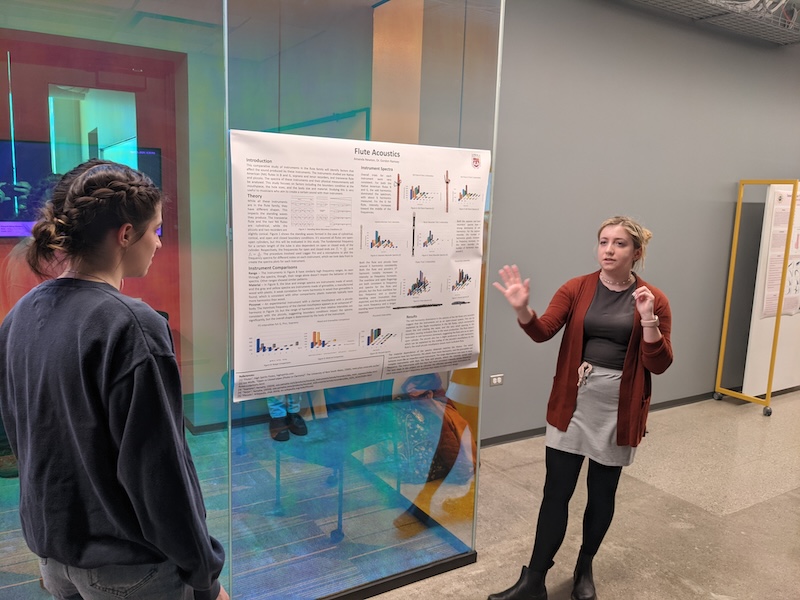
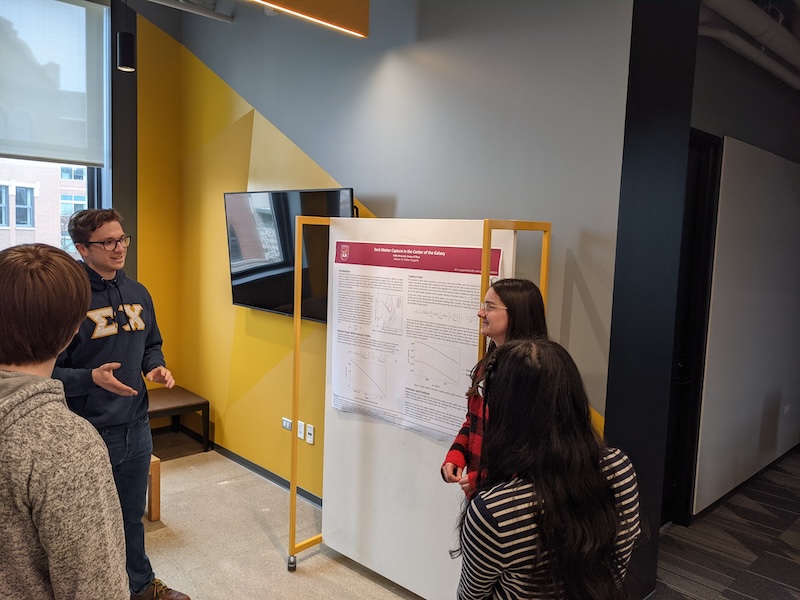
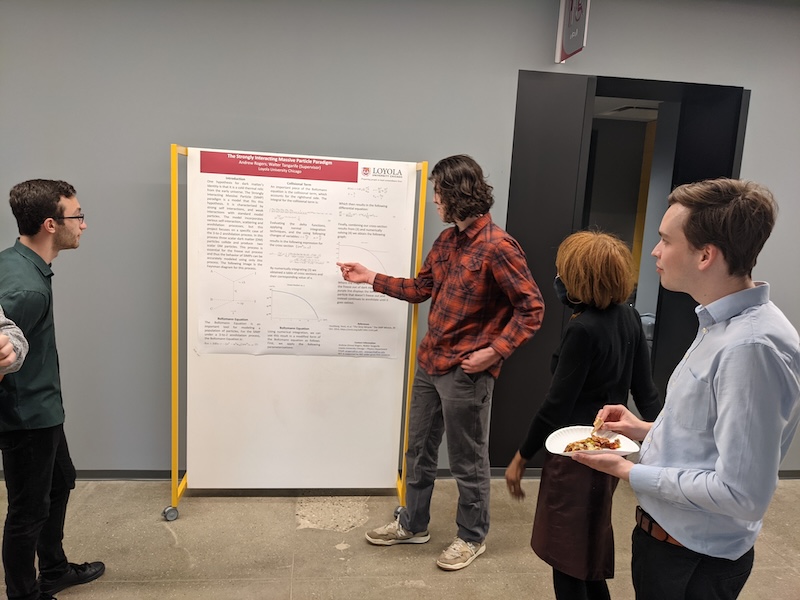


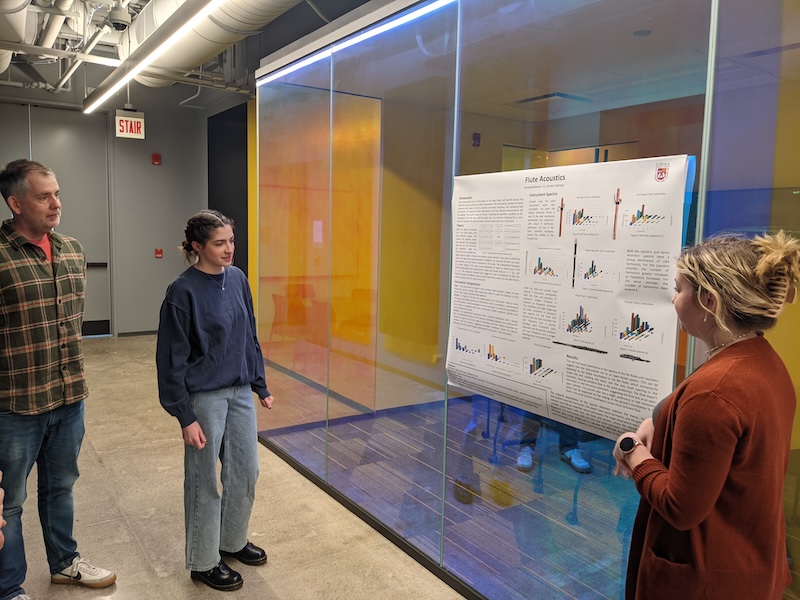




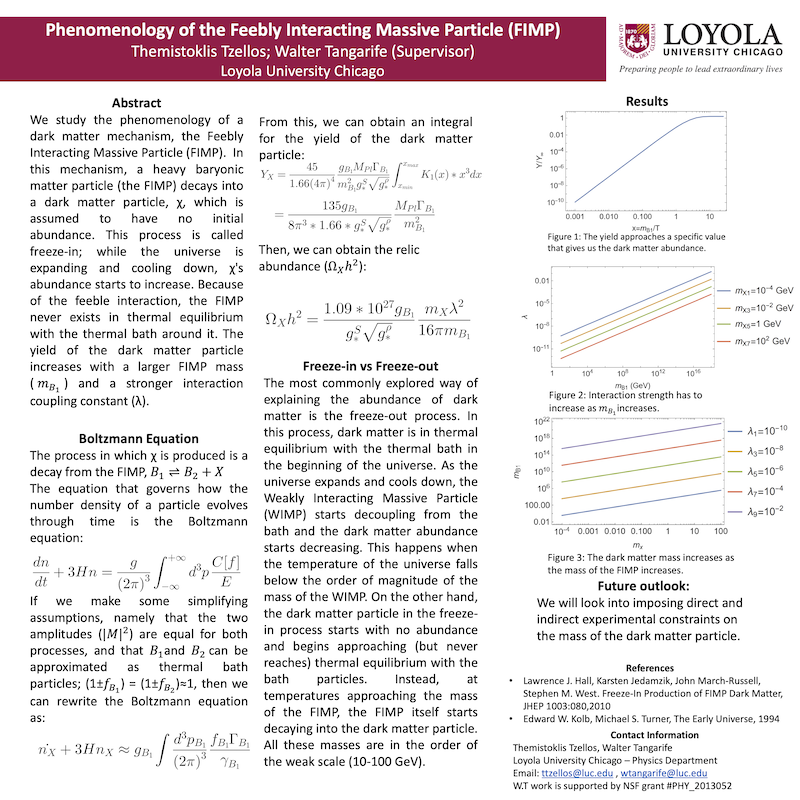
Phenomenology of the Feebly Interacting Massive Particle
Themistoklis Tzellos (Advisor: Dr. Tangarife)
"This project studies the phenomenology of a dark matter mechanism, the Feebly Interacting Massive Particle (FIMP). The decay width is computed and the Boltzmann equation is used to compute the number density of the FIMP."
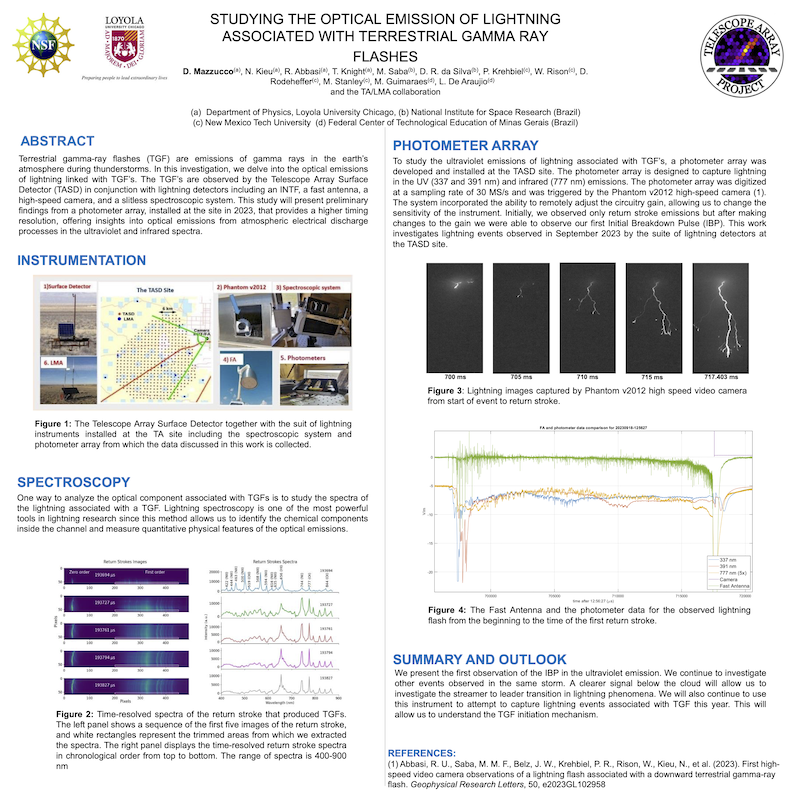
Studying the Optical Emission of Lightning Associated with Terrestrial Gamma Ray
Davide Mazzucco (Advisor: Dr. Abbasi)
"Terrestrial gamma-ray flashes (TGF) are emissions of gamma rays in the earth’s atmosphere during thunderstorms. This study presents an analysis of the optical emissions of lightning associated with TGFs. The TGF’s are observed by the Telescope Array Surface Detector (TASD) in conjunction with a suite of lightning detectors including an INTF, a fast antenna, a high-speed camera, and a slitless spectroscopic system. Additionally, findings from a photometer array, installed at the site in 2023, will be discussed. These photometers share the same field of view as the high-speed video camera and provide higher timing resolution, offering insights into optical emissions from atmospheric electrical discharge processes in the ultraviolet and infrared spectra. This enhanced temporal resolution aims to contribute to the development of conclusive support for the model responsible TGF initiation."
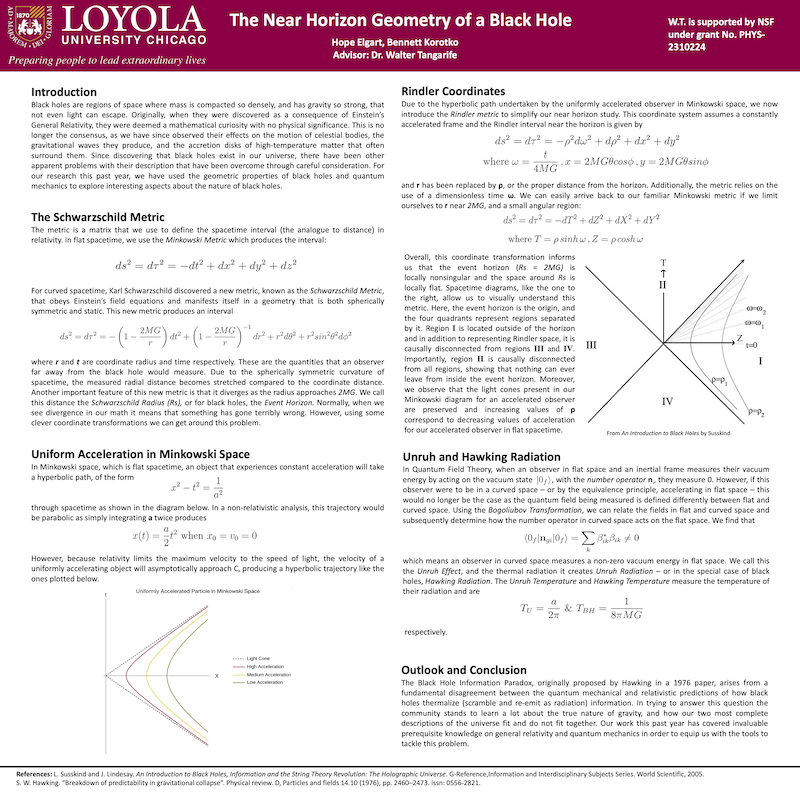
The Near Horizon Geometry of a Black Hole
Hope Elgart and Bennett Korotko (Advisor: Dr. Tangarife)
"We used the geometric properties of black holes in order to explore interesting properties of black holes. By applying coordinate transformations to the Schwarzschild metric, we were able to see that spacetime near the event horizon is locally flat, and that we can consider it the same way we consider uniform acceleration in Minkowski space. This led us to study Unruh radiation, which arises from measuring the vacuum energy of flat spacetime while accelerating. When produced by black holes it is called Hawking radiation, and it shows that black holes are not entirely "black", but instead they emit thermal radiation."
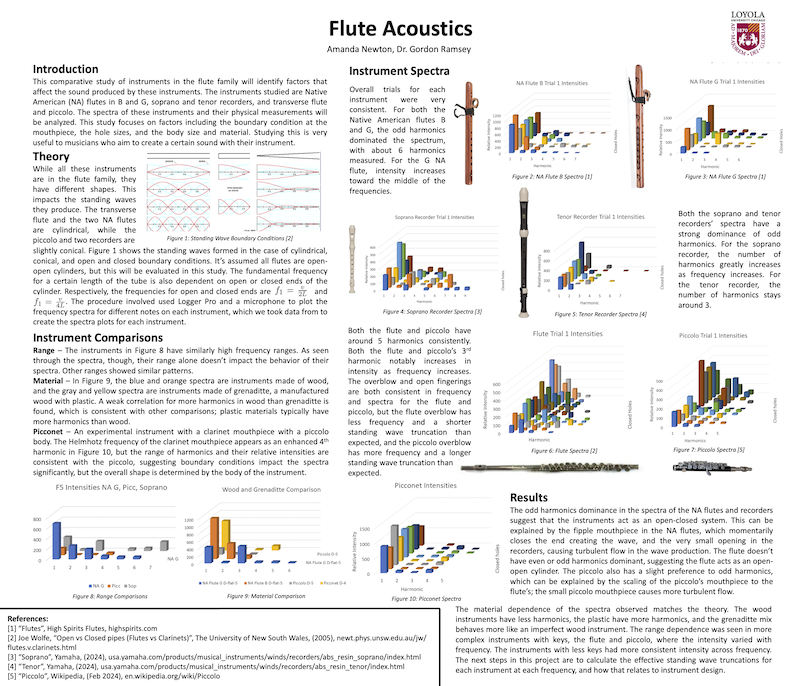
Amanda Newton (Advisor: Dr. Ramsey)
"This comparative study of instruments in the flute family will identify factors that affect the sound produced by these instruments. The instruments studied are Native American (NA) flutes in B and G, soprano and tenor recorders, and transverse flute and piccolo. The spectra of these instruments and their physical measurements will be analyzed. This study focuses on factors including the boundary condition at the mouthpiece, the hole sizes, and the body size and material. Studying this is very useful to musicians who aim to create a certain sound with their instrument."
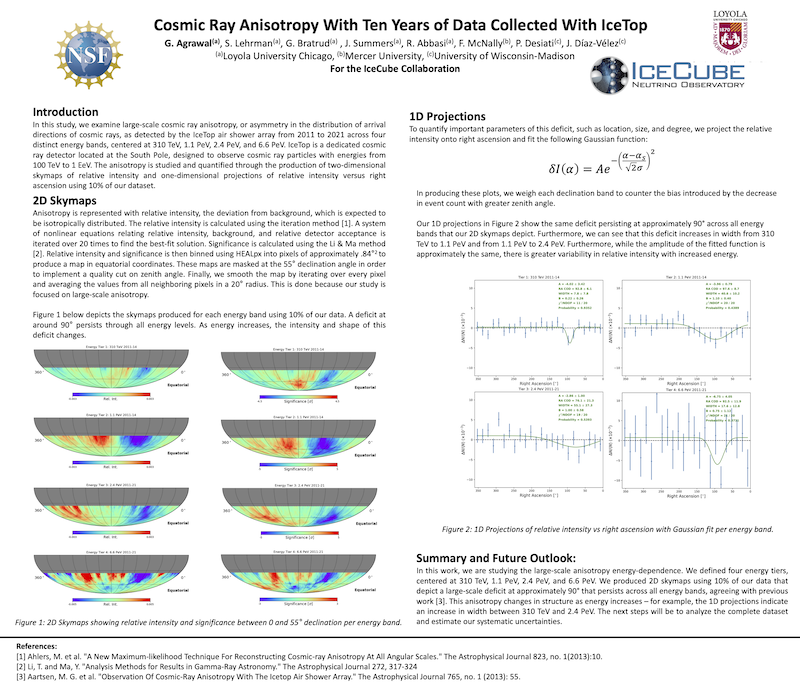
Cosmic Ray Anisotropy With Ten Years of Data Collected With IceTop
Gunwati Agraval and Jillian Paulson (Advisor: Dr. Abbasi)
"Cosmic rays are subatomic particles of extraterrestrial origin, the study of which represents an exciting frontier in physics research. Much is unknown about their composition, origins, and means of acceleration. Studying the arrival direction of cosmic rays can reveal information about their source and nature. This study examines the energy dependence of anisotropy of cosmic rays as detected by the IceTop air shower array located in the geographical South Pole between 2011 and 2021."
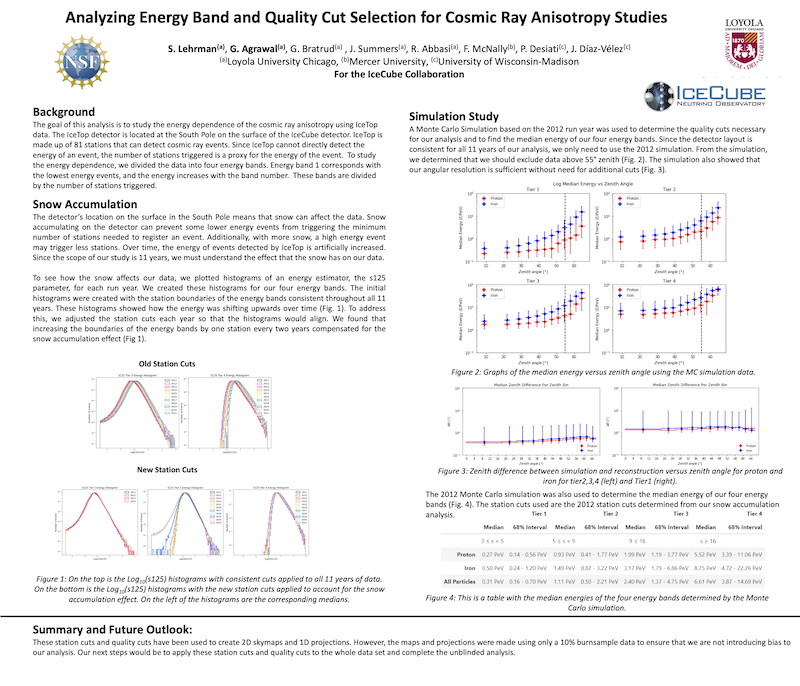
Savanah Lehrman (Advisor: Dr. Abbasi)
"The IceTop detector, located in the South Pole, is being utilized to study the energy dependence of the cosmic ray anisotropy. Before analyzing the anisotropy, a method had to be created to compensate for snow accumulating on the detector. Additionally, a simulation was used to determine necessary quality cuts of the data and to find the median energy of the different energy bands."
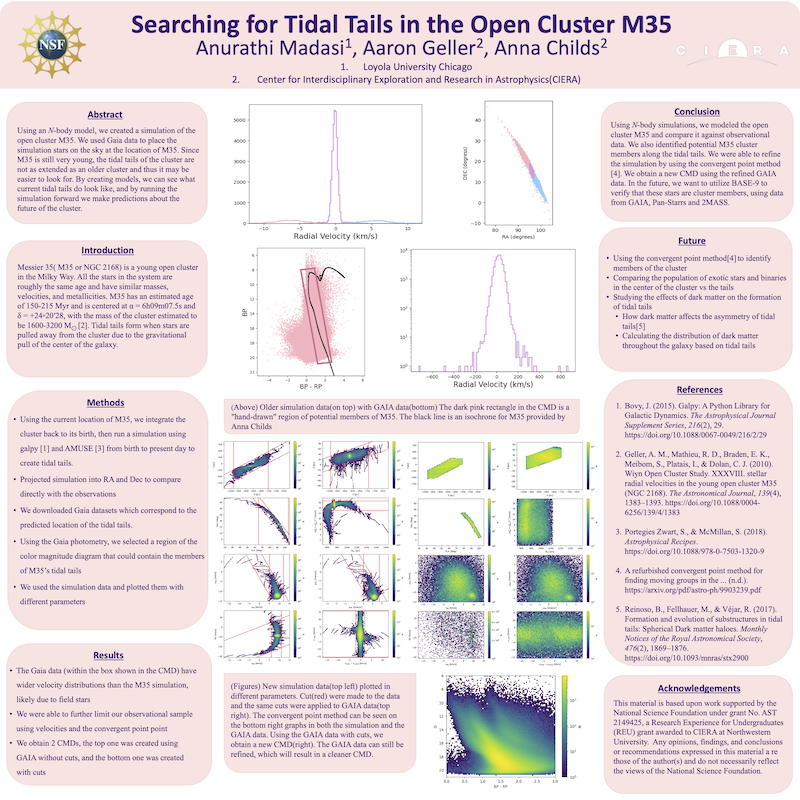
Searching for Tidal Tails in the Open Cluster M35
Anurathi Madasi (Advisor: Dr. Geller)
"Using an N-body model, we created a simulation of the open cluster M35. We used Gaia data to place the simulation stars on the sky at the location of M35. Since M35 is still very young, the tidal tails of the cluster are not as extended as an older cluster and thus it may be easier to look for. By creating models, we can see what current tidal tails do look like, and by running the simulation forward we make predictions about the future of the cluster. This research is currently ongoing, and I am working with Dr. Aaron Geller at Northwestern CIERA."
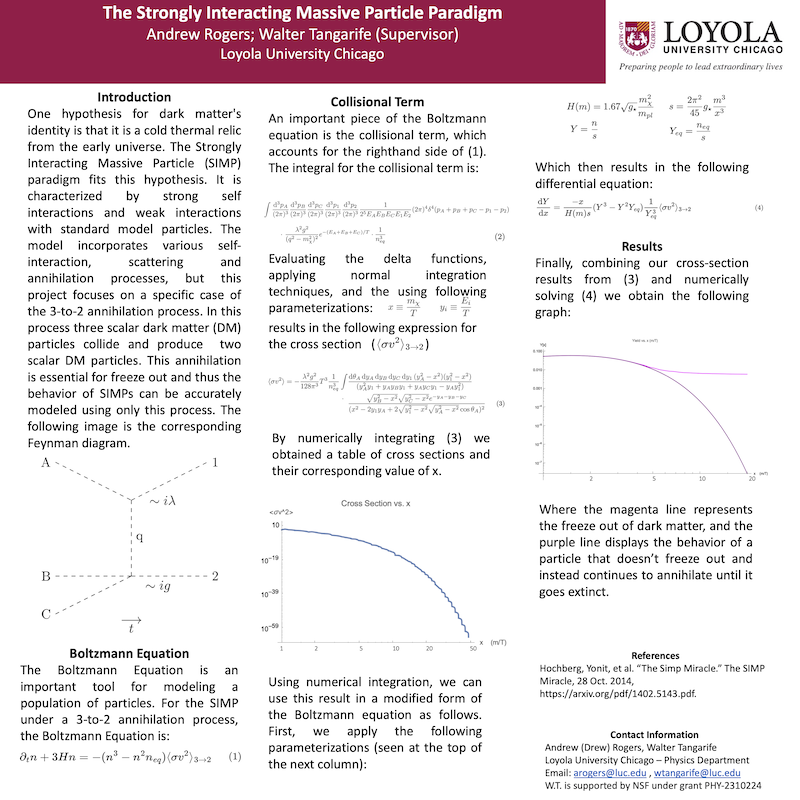
The Strongly Interacting Massive Particle Paradigm
Andrew Rogers (Advisor: Dr. Tangarife)
"I studied the strongly interacting massive particle paradigm, which is a hypothesis for the identity of dark matter. I focused on a 3-to-2 process involving only scalar dark matter particles which I used to model at freeze out scenario."


